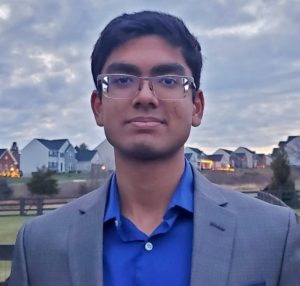
Name: Aravind Sreeram
From: Chantilly, VA
Votes: 0
Be the Change You Wish To See
Four-thousand,
six hundred and thirty-seven.
In
2017, that was the amount of deaths from distracted driving in the
U.S. alone. My grandfather was one of those 4,637. Not because he was
engaging in unsafe practices, but because the person on the other
side of the road was.
With
some states reporting as high as 8% of driving time spent on a
cellular device, the epidemic of distracted driving is spreading to
our increasingly technology-based youth at lightning-fast rates.
Failing to act at this relatively early stage could lead to severe
ramifications ten or twenty years down the line, where hundreds of
deaths could occur on a daily basis due to Facebook taking priority
over a red light. We need to take action, and we need to do it now.
For
those of us who are current drivers and cognizant of the apparent
safety concerns and risks, we need to spread the word. Meaningless
catchphrases like “eyes on the road!” accomplish little to convey
the horror and reality that potentially awaits those who don’t heed
their warning. In my community, I’ve made a short video outlining
the safety risks and imminent dangers that await young drivers (those
most prone to distracted driving) and I sent this video via Facebook
and email to all families with future drivers. By supplementing a
factual video with parents’ direct instructions and warnings, the
probability of new drivers understanding the need to take precautions
will be amplified tenfold, if not more.
This
is where drivers ed need to be introduced. As a
reinforcement beyond parents and concerned citizens, the required
class is one of the few ways to make an impact on teenagers’
beliefs and morals before they take on the dangers of the road. We
need to encourage our classrooms to engage in probing discussions,
multimedia presentations, and maybe even testimonials, to get a true
awareness and comprehension of how serious the issue at hand is.
There
are three types of learning that humans engage in: auditory, visual,
and kinesthetic. Through hearing
jarring stories from perhaps other classmates, a police officer, or
another trusted adult, otherwise apathetic teenagers might be able to
better empathize with the issue our country faces that produces
dozens of deaths every single day. By seeing
real footage of a car crash or videos of biological processes that
take place when your body is intoxicated or mind is distracted, it
implants irrefutable evidence of the malpractices of distracted
driving. And finally, demonstrations
with drunk goggles, texting and driving, or other simulations can
help students realize the truth about how difficult it is to stay
safe when their full attention is not at the wheel.
I’ll
never forget the death of my granddad and the circumstances behind
it. My presence in our community as a strong advocate to mitigate
distracted driving will only grow in the future, and I hope that
through some simple improvements and alterations to our
daily lives, we can end up saving many more.